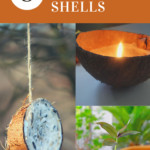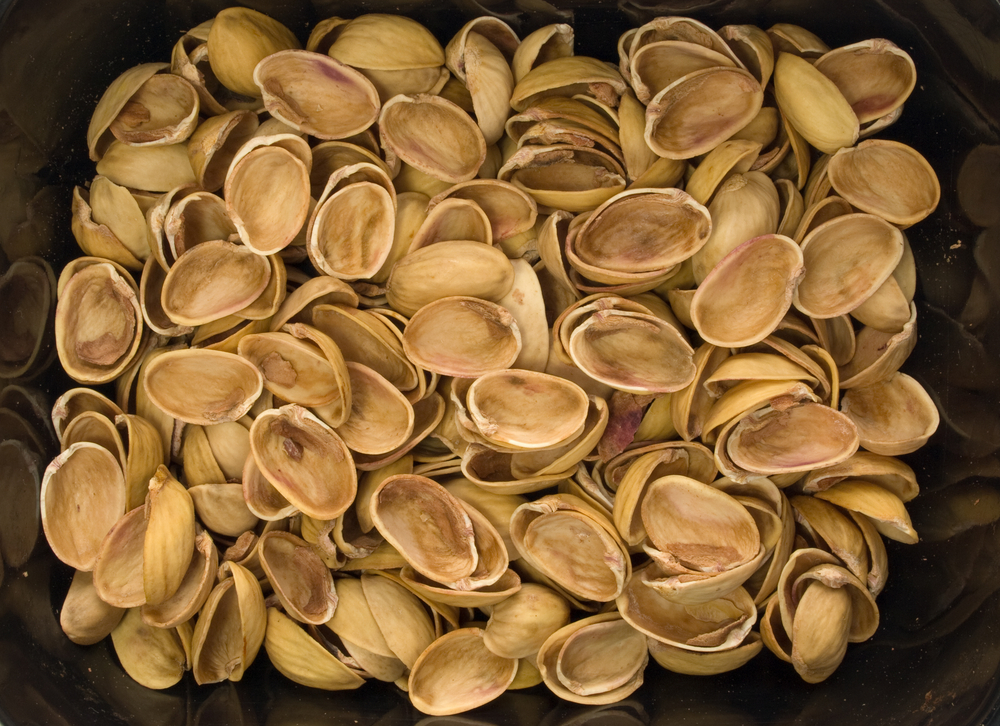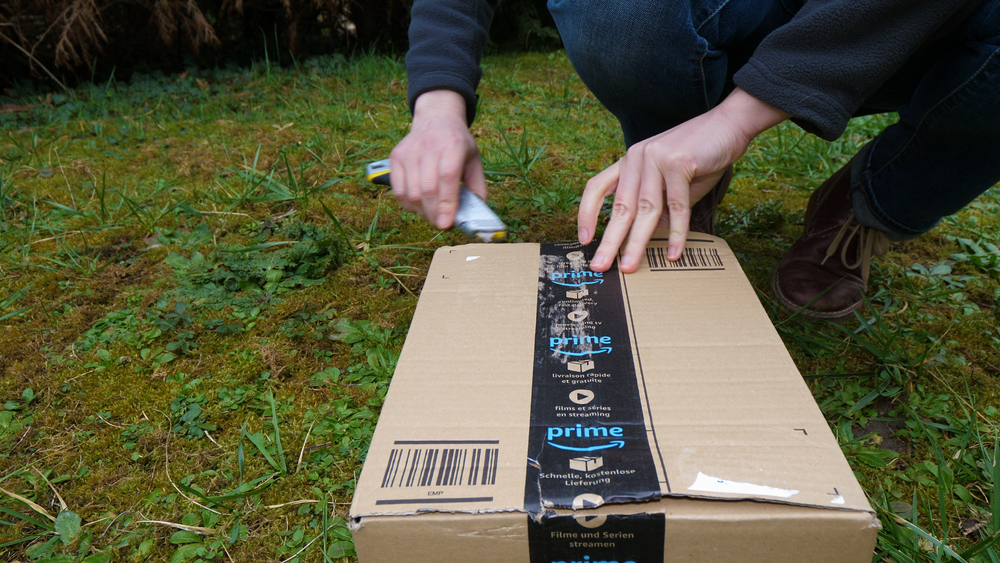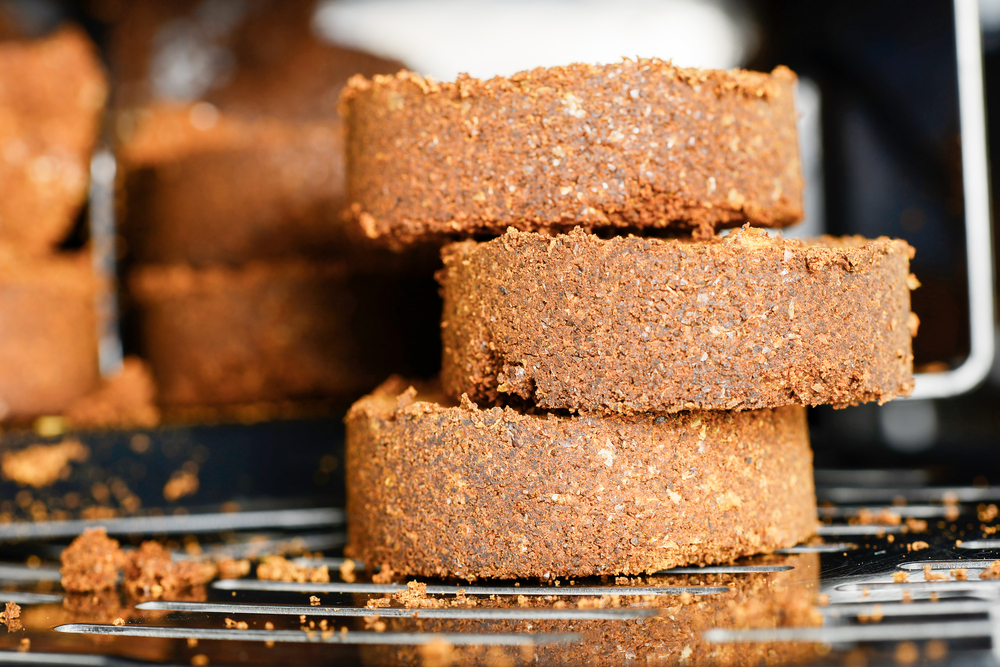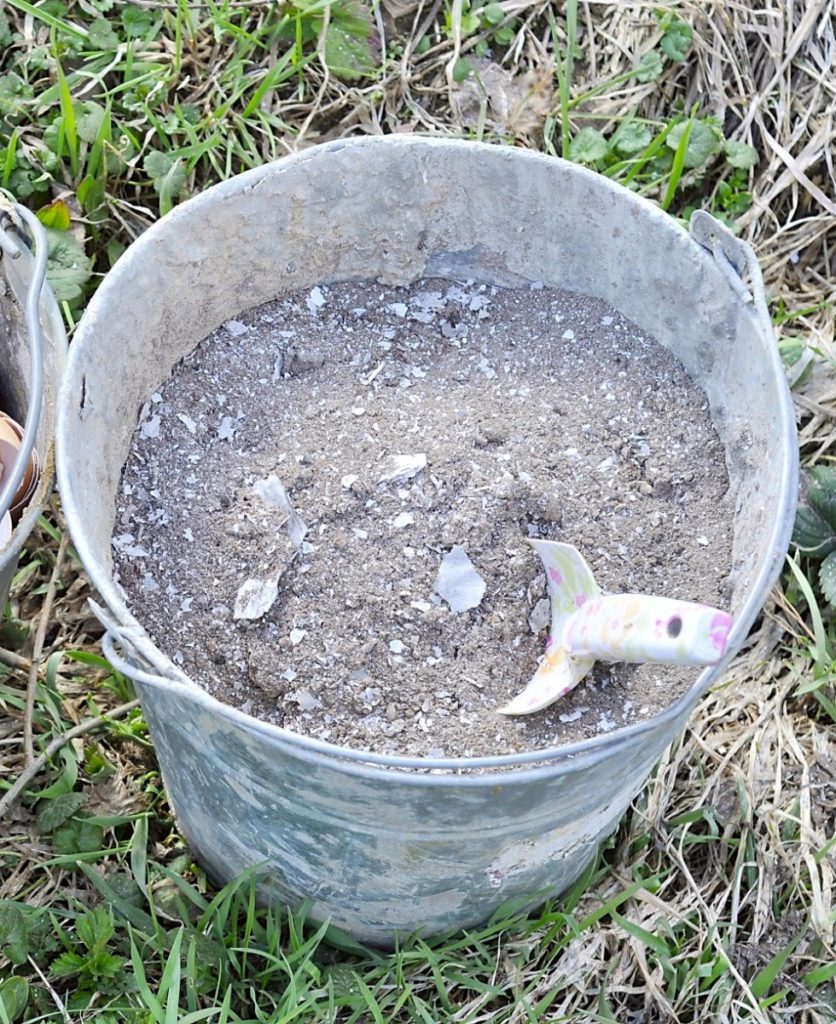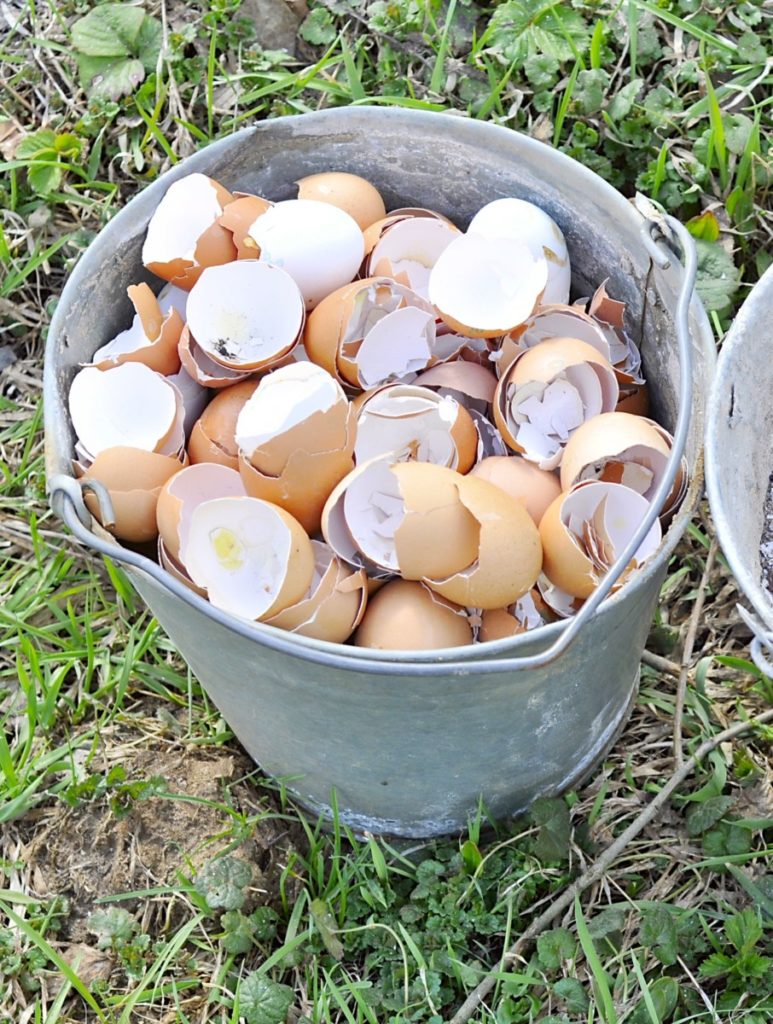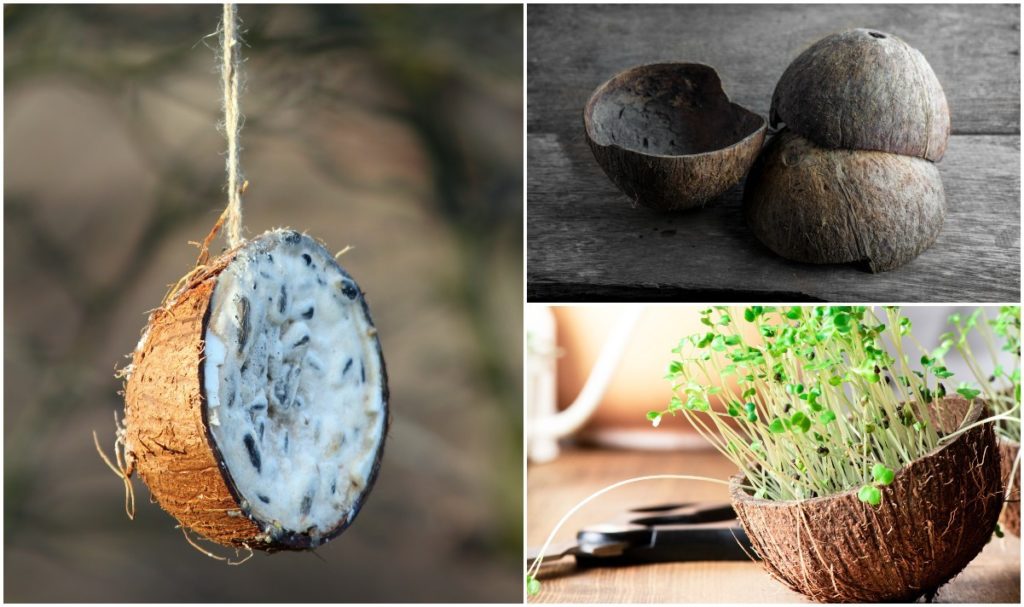
We all know that coconuts can provide a range of yields – from the edible fresh milk and oil, to the coconut coir we can use as a peat compost substitute or mulch in our gardens.
But what you might not realise is that the shells, though often thrown away, can be very useful too.
In this article, we’ll explore eight potential uses for coconut shells in the home and garden. These ideas can help you to move away from waste and closer to a zero waste lifestyle.
For all of these ideas, you should first enjoy the sweet liquid from the coconut and scoop out the delicious white flesh. You’ll then be left with the hard shell for which there are a number of clever uses.
Firstly, can you compost coconut shells?
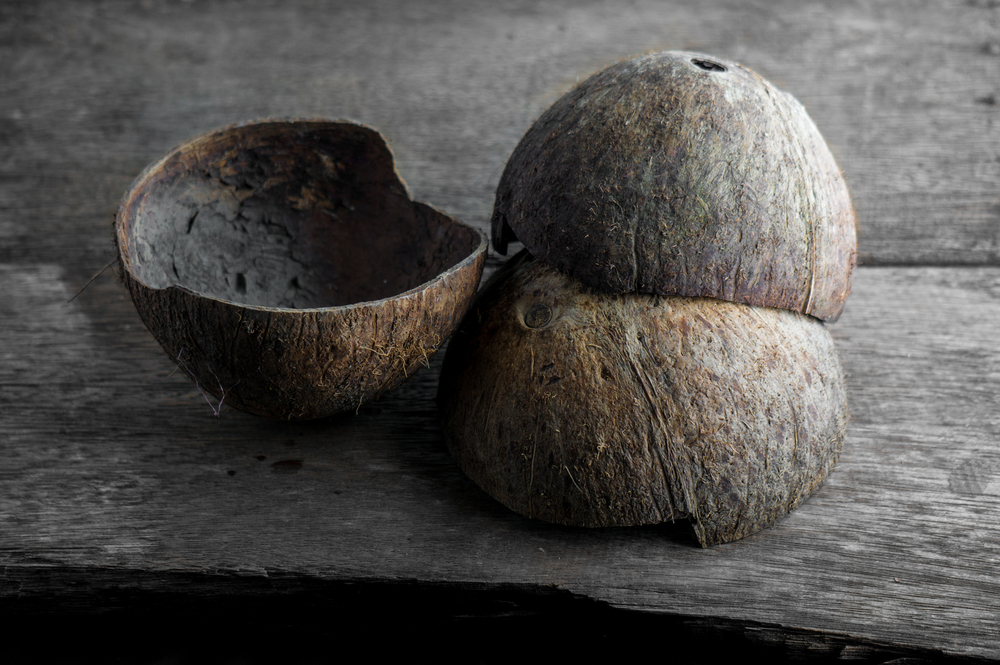
For those of us with home composting systems, it’s always the first question we ask when we have an organic material we are about to throw away.
Yes, coconut shells can be composted – but they will take a lot longer than most other materials to break down. Some sources say one year, others say ten, but what is clear is that when your food scraps and grass clippings have become lovely, crumbly compost, you’ll still be left with hard coconut shells.
For that reason, it may be better to use your coconut shells in the ways we reveal below.
Pin This For Later
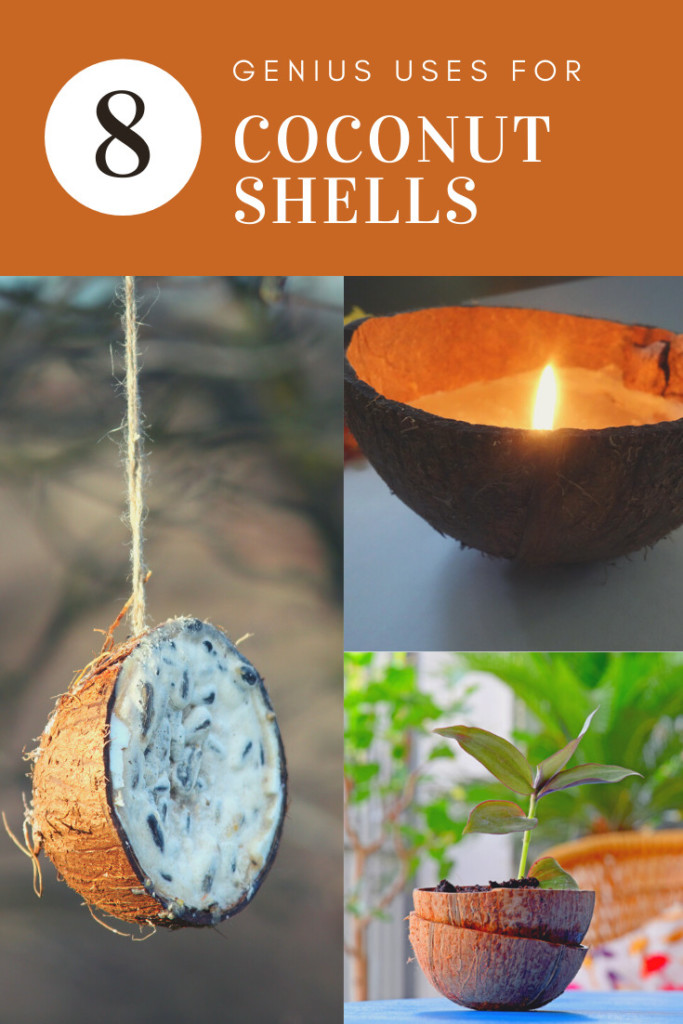
1. Simple Coconut Shell Plant Pot
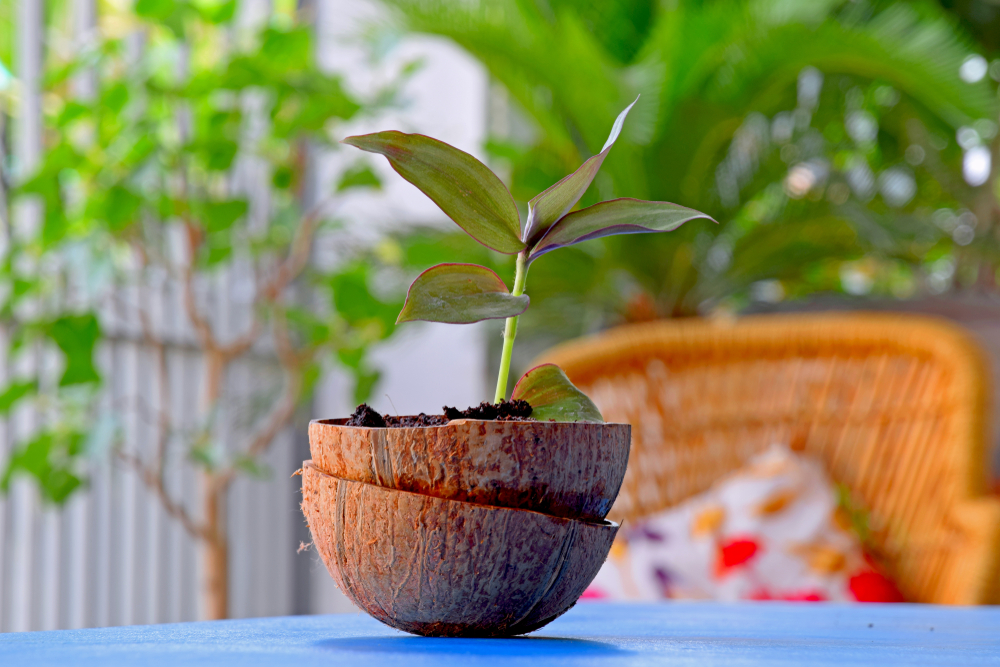
The first, easiest and simplest idea to consider is simply using half coconut shells as plant pots.
These can look attractive, and allow you to avoid the use of plastic plant pots in your home or garden. The shell is fully biodegradable. Simply make a few holes in the bottom of each one for drainage, then place these in your garden or in another shell half to catch water if growing indoors.
Coconut shell plant pots are ideal for seedlings to be potted on, and can also make attractive holders for microgreens, succulents, smaller herbs or perhaps even air plants indoors.
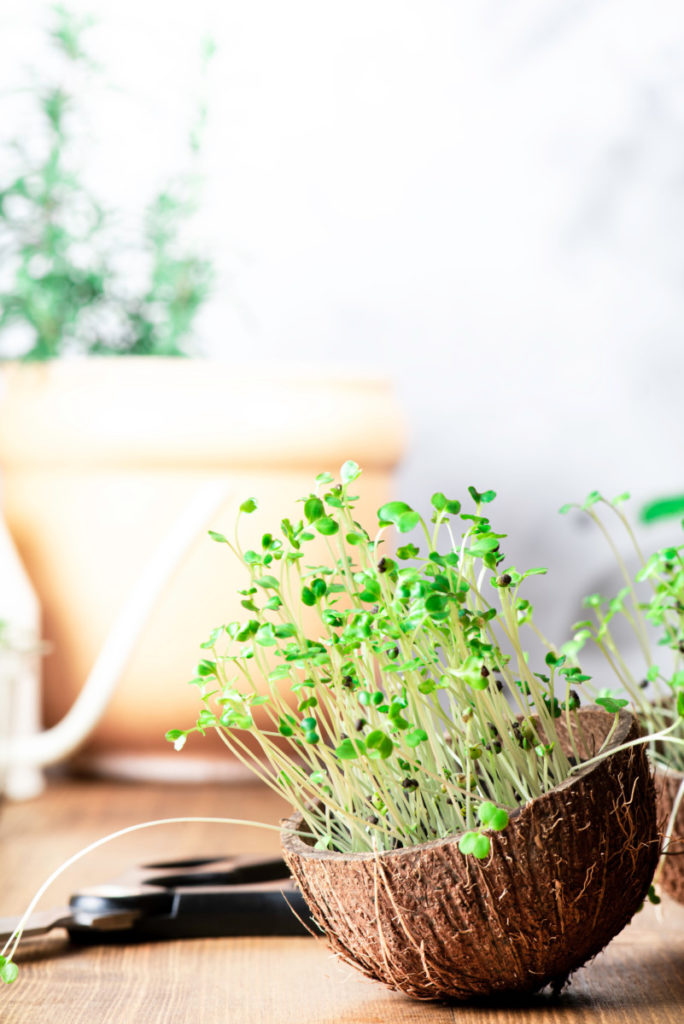
2. Hanging or Vertical Coconut Shell Planters
If you want to take things a stage further, you can also use coconut shells to make hanging planters or use them in the creation of a vertical garden. Simply adding holes around the top edges of the shell will allow you to hang them up and use them as mini hanging baskets in your home or your garden.
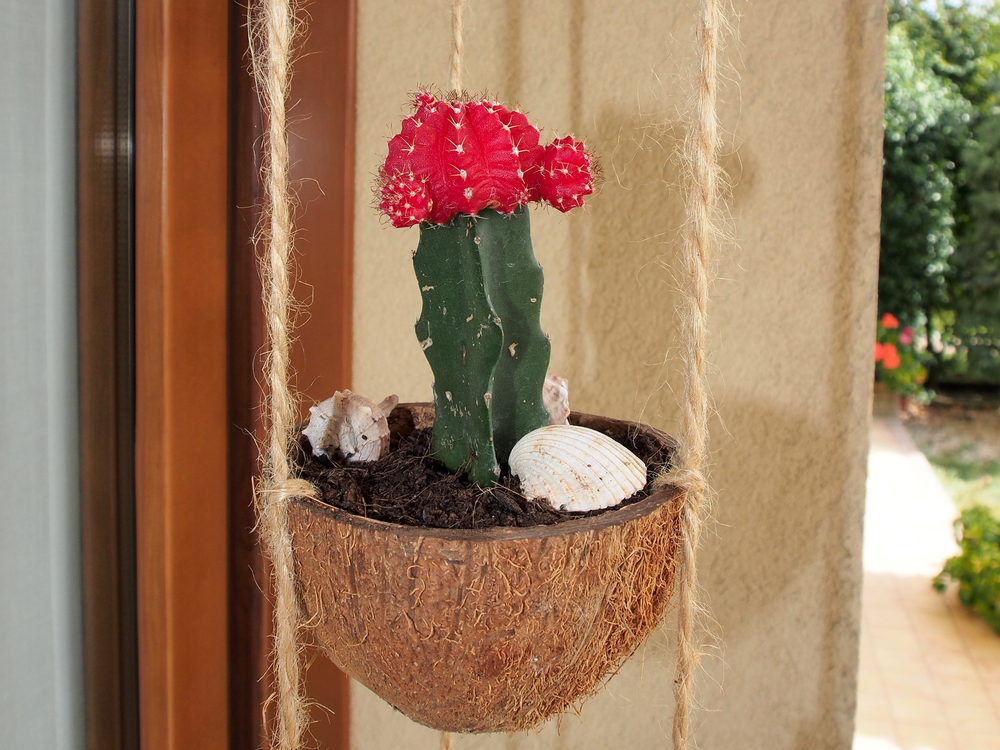
You could also attach the half coconut shells to a wall or fence, or in a spiral formation around vertical columns to make the most of the vertical space available to you.
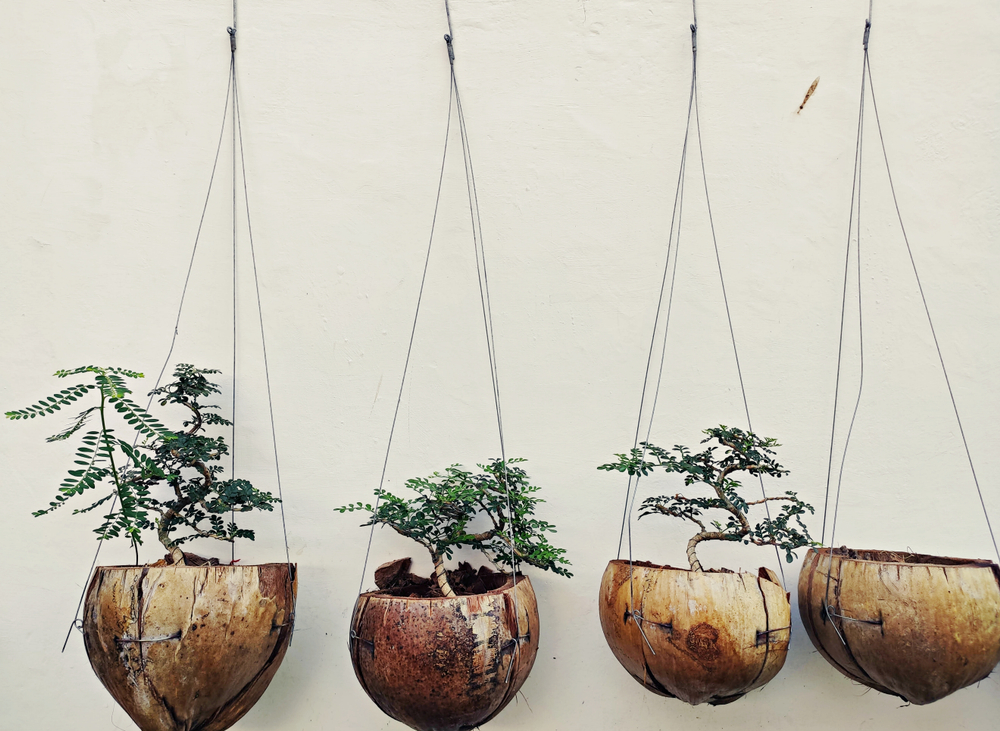
Here are a few examples:
Easy, Cheap and DIY-able Coconut Shell Planters @ barbuliannodesign.medium.com.
Making Bamboo and Coconut Shell Planters @ thriftyfun.com.
3. Bird Feeder
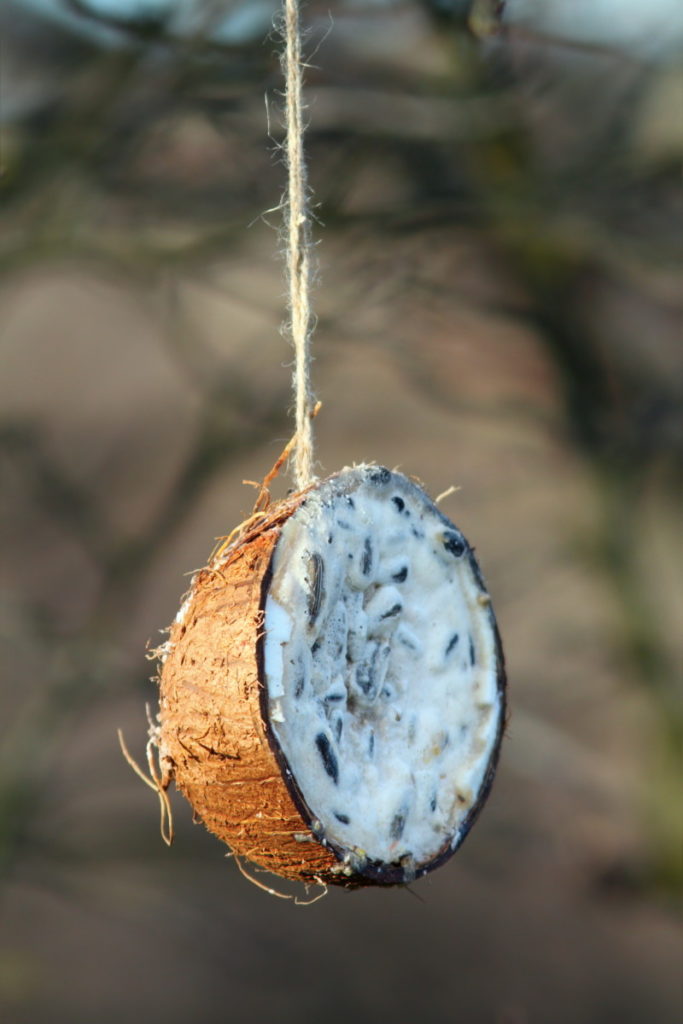
You can also use a coconut shell half to make a simple bird feeder for your garden.
Simply make holes in the half shell so you can hang it somewhere suitable for feeding wild garden birds, then fill it with a mixture of lard, bird seeds and other foods birds will enjoy.
Take a look at our Two Ingredient Birdseed Ornaments here and adapt the process to work with a coconut shell.
Here are some more bird feeder ideas for making with a coconut shell.
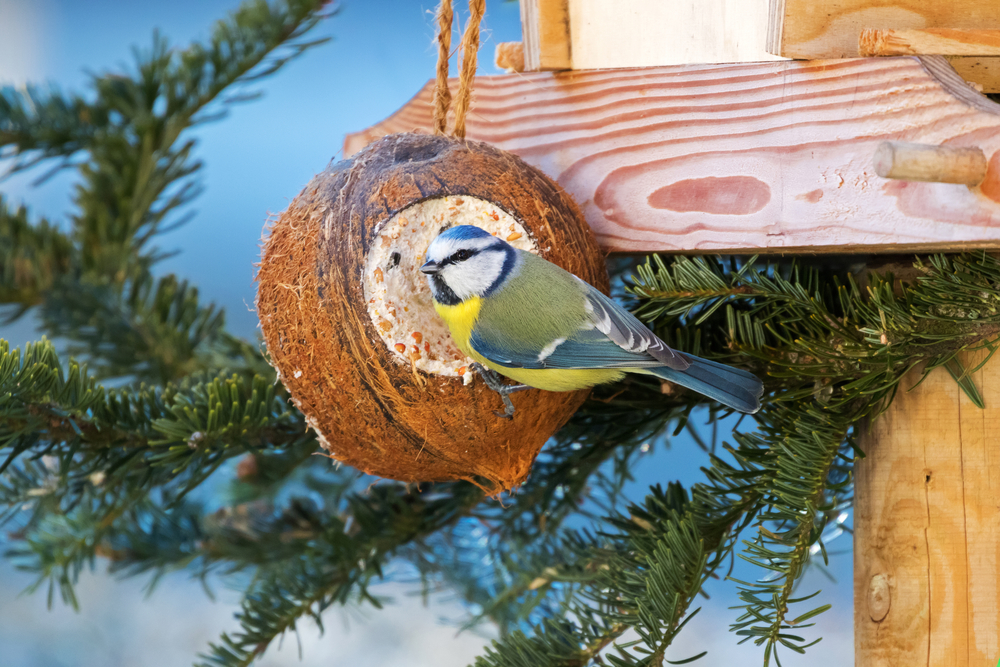
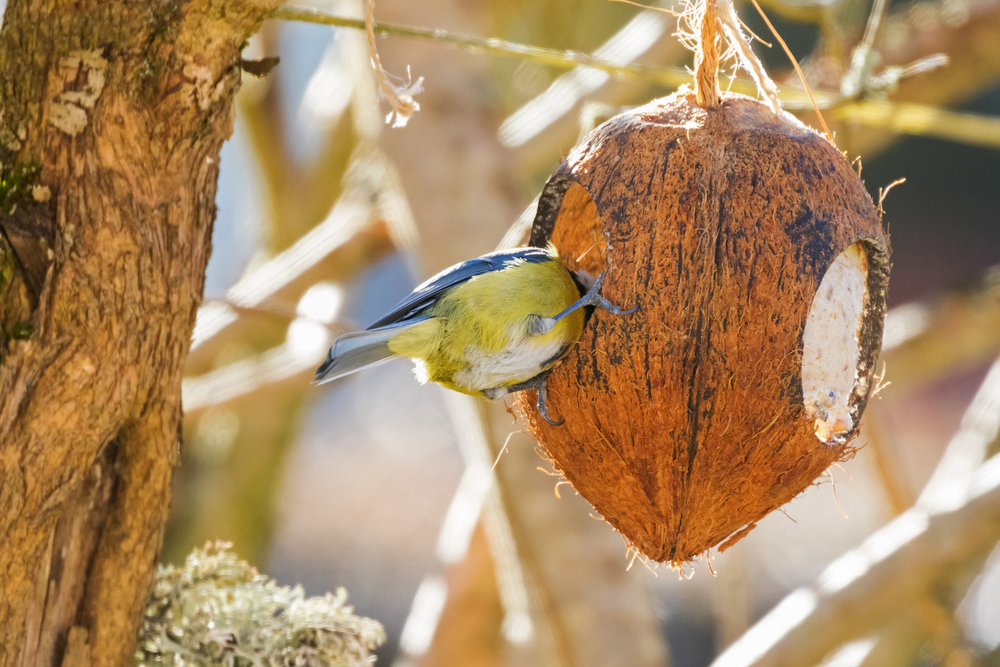
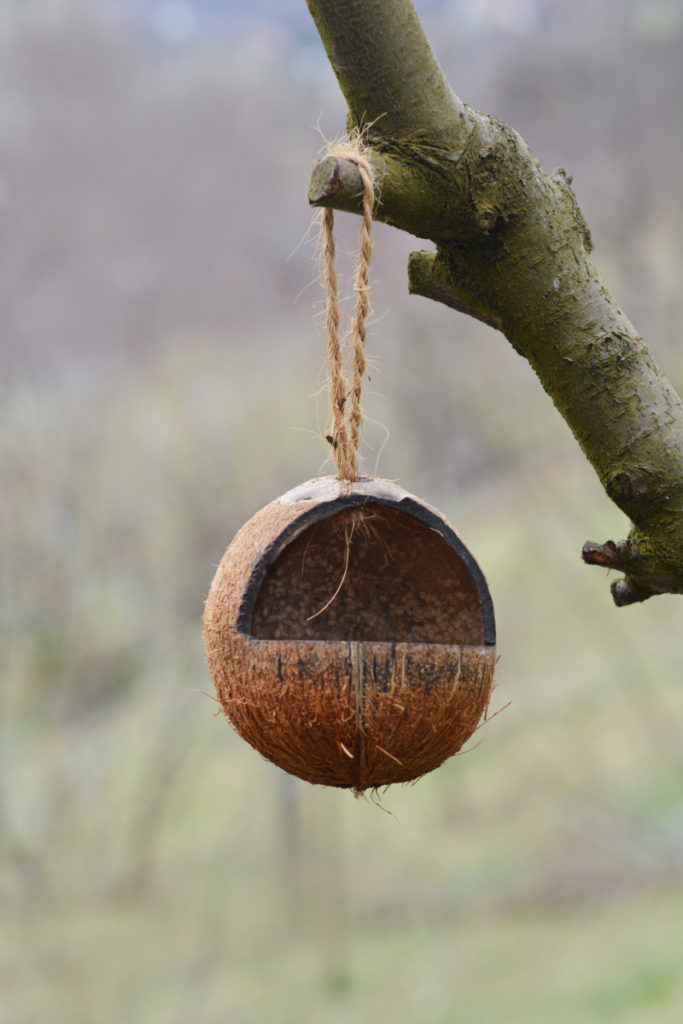
4. Coconut Shell Basket
Some simple DIY skills could also allow you to turn a coconut shell half into the base for a small basket that you can use to collect seeds, fruits etc. in your garden. You could use another strip of the shell to make a handle for your little basket, or even carve a whole shell to make a basket with handle already attached.
Or you could make a series of holes around the top of the shell half and use jute, bark, willow whips or another natural material to weave upright sides to increase the size of the basket a little before adding a handle.
5. Coconut Shell Bowl
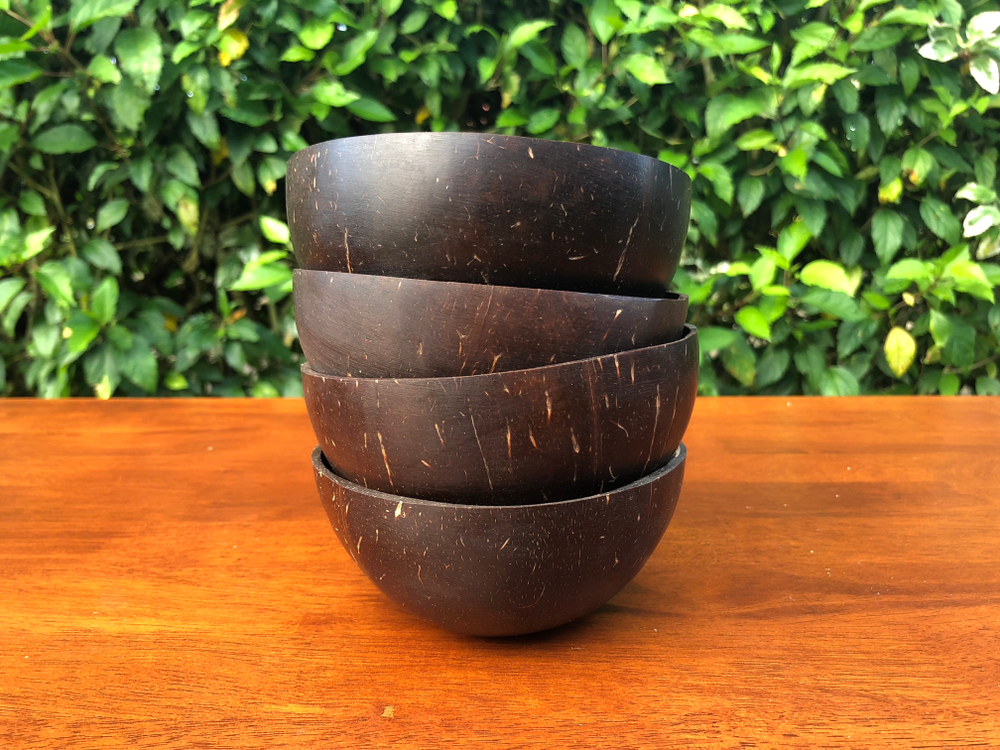
A coconut shell could also be cleaned up and polished to make a small bowl. It could be used for display purposes – for holding dried nuts or pot-pourri for example.
If you want to use the coconut shell as a waterproof bowl, to eat from, then you will need to finish it with a coating of linseed oil and mineral spirits.
How to Recycle a Coconut Shell into a Bowl @ handicraftsafimex.com.
A simple, shallow coconut shell bowl could also make a good soap dish, or be used in a range of other ways around your home.
6. Simple But Effective Ladle
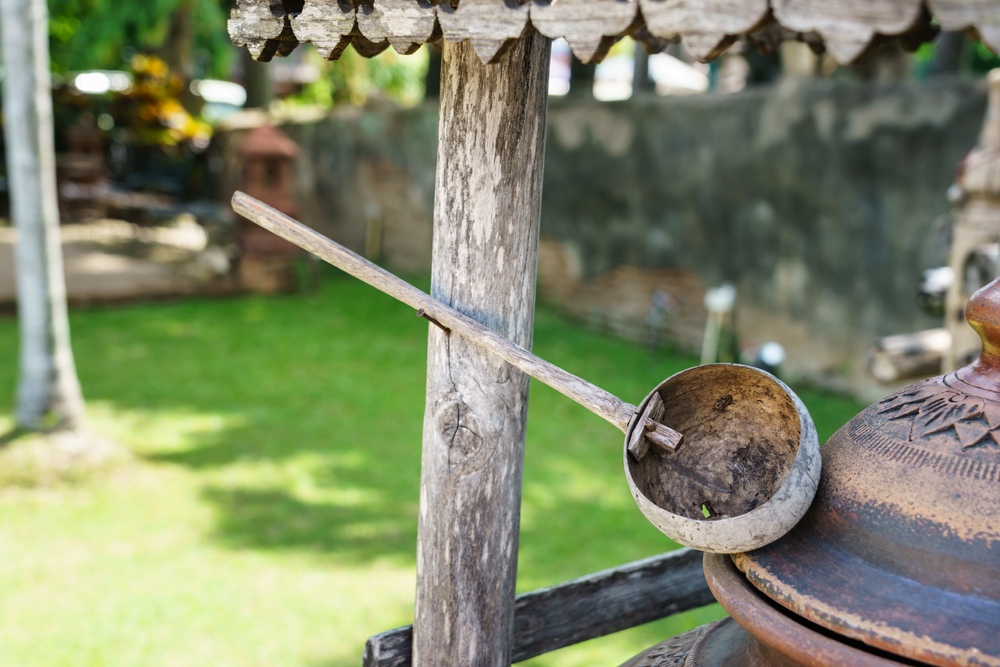
In countries where coconuts are common, it is not unusual to see householders using coconut shell halves attached to sticks of some kind as simple but effective ladles.
The process would be similar to that used to make the bowl, above, but once finished, you would attach your handle so the ladle bowl can be dipped to scoop up food or drinks.
7. Candle Holder
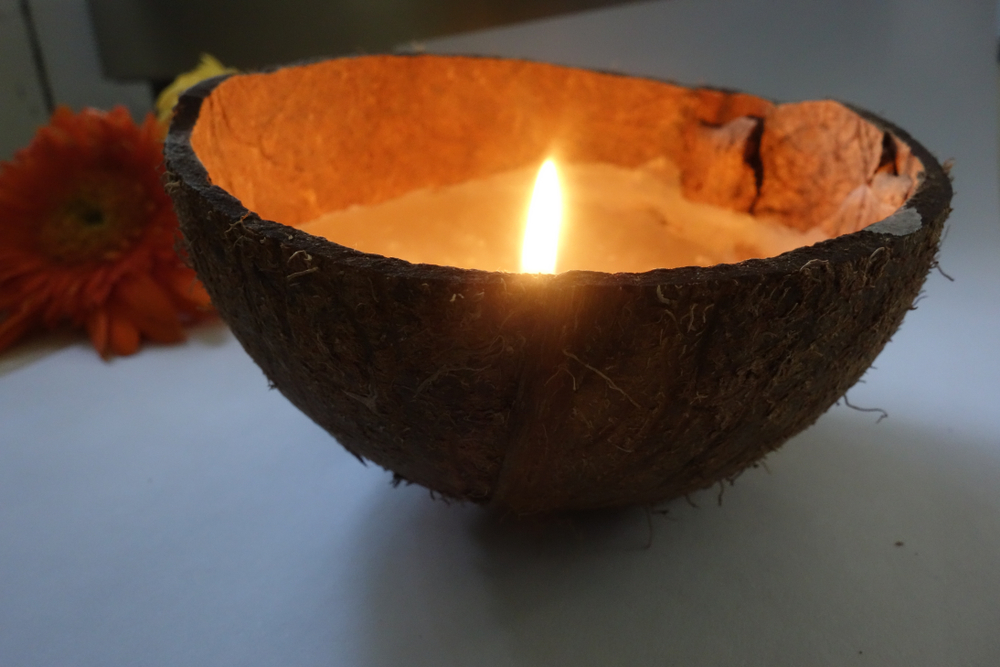
You can also use a coconut shell to make a simple candle holder. Simply clean up and prepare your coconut shell, then add your wick and carefully pour in the wax.
How To Make Coconut Shell Candles @ homesteady.com.
You can also consider carving and drilling holes in a coconut shell to create a beautiful tea light holder. By varying the design and thinking carefully about the patterns you make with the holes, you can determine how light is cast and create a truly beautiful object for your home.
8. Coconut Shell Jewelery
When you break into a coconut, it might not always sheer into neat halves. So what if you have smaller pieces of coconut shell to use? Well, these smaller pieces of coconut shell can still have a wide range of uses. For example, you can turn the pieces into some jewelry, for yourself or potentially to give away as lovely home-made gifts.
Here are instructions for making some coconut shell earrings:
Coconut Shell Earrings @ instructables.com.
And here is a guide to making a coconut shell pendant:
Make Jewelry from a Coconut Shell @ snapguide.com.
And here is a video showing how a coconut shell ring can be made:
Going Zero Waste
You likely don’t get through many coconuts each year, but upcycling your coconut shells in one of the above ways is a brilliant way to move towards zero waste.
We’ve published a number of articles recently that reveal exciting, clever and practical ways to put waste materials to good use and go zero waste. Take a look at the articles below for the items you most commonly throw away.

Get the famous Rural Sprout newsletter delivered to your inbox.
Join the 50,000+ gardeners who get timely gardening tutorials, tips and tasks delivered direct to their inbox.


